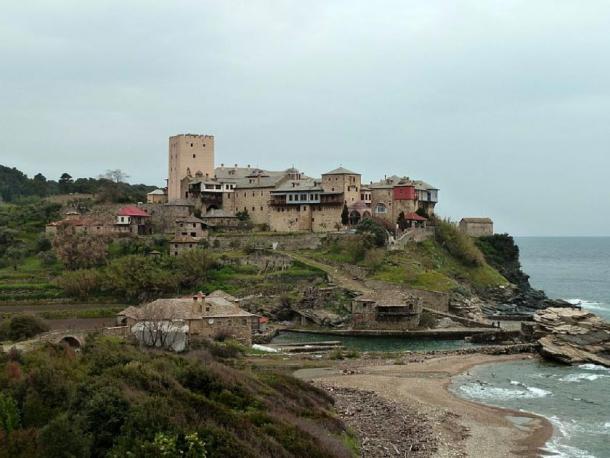Mystery over ‘female’ remains found on male-only Greek mountain

Mystery over ‘female’ remains found on male-only Greek mountain
Most specialists in Greece were shocked by an analysis of some bones. On Mount Athos, which is a male-only area, they were found, inhabited exclusively by monks.
Some of the bones seem to be female remains and this is raising eyebrows among many academics. If the bones are confirmed to be female it may force researchers to rethink the history of Mount Athos, which is one of the holiest places in Orthodox Christianity.

During conservation work, a restaurateur, Phaidon Hadjiantoniou, who has been working on the site for decades, unearthed the bones in the subsoil of a chapel The chapel is dedicated to St Athanasios, which is part of the Pantokrator monastery and dates back to the Byzantine Empire.
Hadjiantoniou became fascinated when he discovered bones under a chapel floor for the first time and contacted a specialist immediately. According to The Guardian, the remains ‘ included a forearm shinbone and sacrum ‘
Seven people are thought to have been buried under the ground. It seems they were initially buried elsewhere and were at one time interred under the chapel, in what is known as a secondary burial. The monastery’s abbot and monks were perplexed at the finds.
Laura Wynn-Antikas, an American anthropologist examined the bones and compared them with others found at the monastic site. Some of those found in the chapel’s subsoil were not as robust as others found at Mount Athos and appear too small to be from men.
The anthropologist found that some of the bones unearthed ‘had measurements that noticeably fell in the range of a female’ according to The Guardian. This led her to conclude that the bones were female remains.

Wynn-Antikas told The Guardian that, ‘If we are talking about a woman or indeed more than one woman, it will raise a lot of questions’. This is because of the unique history of the autonomous monastic community on Mount Athos.
There have been Christians living on the mount for almost 1800 years. Today there are over 20 monasteries on the mountain and nearby peninsula, and it is home to almost 2500 monks, some of which live in caves and huts.
For millennium women and even female animals have been banned from the enclave which is an autonomous political entity in the Greek Republic. Women were banned from Mount Athos in order to ensure that the monks kept their vows of celibacy.

The only females allowed in the area are female cats – presumably they are needed to catch mice.
Mount Athos’ prohibition on lady visitors is very controversial and the European Union has declared it illegal to ban women. However, the ban on women remains and only a limited number of male pilgrims can visit per day.
This is what makes the possible discovery of the female bones so important. Hadjiantoniou stated that “If a woman is found among the bones it will be the first known incident of a female finding her final resting place on Mount Athos” according to The Guardian.

One possible explanation for the discovery of female remains may be related to the troubled history of Mount Athos. The area was plagued by raiders and pirates for much of its history and there are recorded instances when the monks opened up the monastery to women seeking sanctuary. What is clear is that the bones almost certainly belonged to someone who was rated as important by the monks.
Being buried in a chapel was a singular distinction. If some of the bones are shown to be female, they probably belonged to a woman or women of high social or religious standing. There have been recorded instances of females staying in the monastery, despite the 1000-year-old ban.
Hatjiantoniou has speculated that the female remains ‘might possibly belong to a woman called Stasha, the wife of a 16th-century landlord called Barboul or Barbouli who lived at the monastery with his sons’ according to The Greek Reporter.
Investigating the remains is challenging as there are no skulls and the bones were also removed from their original burial place. International Business Times quotes Wynn-Antikas as saying that ‘the bones have been moved from their original burial, so information has been lost’.
The remains have been safely stored and have been transported to Greece’s Demokritos research centre in Athens.

Here the bones will be carbon dated by a leading Greek expert and their DNA tested, and it is hoped that this can help to clear up the mystery of the female remains in a male-only monastery. Moreover, if it is proved that a woman was buried on Mount Athos, it could lead to more calls for the monasteries to end their ban on females.